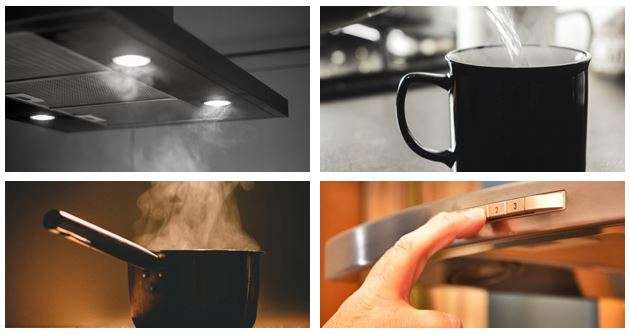Kitchen Extractor Fan – what do they do?
Kitchen Extractor Fans are something that we often take for granted, especially in modern homes, but what exactly do they do and what are the benefits of having one (or more!) in your kitchen?
We look into the whole subject in this article along with an interesting experiment later on in the article where we monitor relative humidity in a kitchen over a full month, with fascinating results.
In a nutshell a kitchen extractor fan serves two primary purposes:
- To control steam and humidity levels from cooking in a kitchen
- To control cooking smells and odours from cooking in a kitchen
As well as that there are secondary benefits:
- Helping to prevent condensation in kitchens
- Helping to prevent damp walls and ceilings in kitchens
- Helping to prevent mould on walls and ceilings in kitchens
- Helping to prevent all of the above in other rooms in the house
As you will likely know, when you cook, especially with pots and pans containing boiling or simmering water, a lot of steam (and smells) can circulate potentially causing a lot of condensation on walls, ceilings and window condensation. This is usually worse in winter when (a) windows are more likely to be closed and (b) other surfaces are colder making hitting dew point more likely.
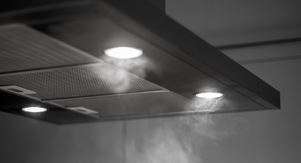
Cooker Hoods vs Extractor Fans – What’s the Difference?
This might sound like an obvious question but there are some interesting things to consider when looking at how kitchen extractor fans differ to cooker hoods, especially as not all cooker hoods extract to the outside (more on that later).
Kitchen extractor fans is a general phase to describe a negative pressure (i.e. suction – hence ‘extractor’ fan) vent in a kitchen. They can take many forms and, in many ways, can look like a bathroom extractor fan or even PIV Unit vent (although PIV units are ‘positive’ ventilation).
A cooker hood is a unit often containing an extractor (or recirculation) fan in the proximity of a hob on a cooker. They are usually mounted directly above them to capture and extract steam and odours which rise as cooking takes place. In some instances they are ‘pop-up’ from the actual kitchen unit itself.
As you can see on the Currys website for example they come in all shapes, sizes and costs.
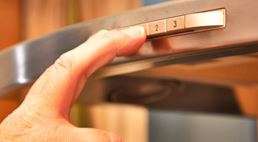
As we said earlier, not all extractor fans vent to the outside of a property so…
Do Kitchen Extractor Fans Need to Vent Outside?
The short answer to this is no. However, it’s widely agreed that extracting to the outside of a property is far more effective all-round. Extractor fans that work only on a ‘recirculate’ are far less effective at removing moisture from the air, which is the main purpose of an extractor fan.
Quite often the filters, which may include carbon filters, are relatively effective at removing smells but they are not as effective at removing steam (which causes condensation). If you think about it, where would the moisture go? It might sound silly to say but extractor fans and cooker hoods don’t really come with a water tank or dehumidifier in them as standard. Plus, where would that water drain to?
So back to the benefits of kitchen extractor fans…
Condensation and Mould in Kitchens
In our article about the signs of a water leak, we talked about how there are a few signs of a leak to watch out for. Several of these things can be associated with ‘damp’ problems in kitchens and can in fact be linked to condensation problems (and then mould problems).
Over time, if moisture in a kitchen is not controlled, the steam from cooking (or boiling a kettle) will settle on surfaces, reaching dew point and forming condensation on various surfaces. This in turn can cause damp patches on ceilings etc which can cause direct water damage or secondary issues such as mould problems. You can measure surface temperatures with an infrared laser thermometer.
An effective kitchen extractor fan helps to remove moisture, control humidity and helps to prevent some of these issues in properties. To understand dew point more – see our dew point chart.
If you have a problem with damp, condensation problems or mould, contact us and we can help identify the cause of the problem and recommend how to resolve it. We can also remove mould our dry properties if needed too.
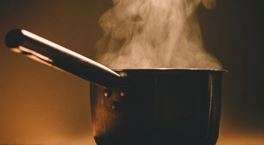
On this topic, see our handy Bathroom Extractor Fan Tool which explains about how often air exchanges are needed for bathrooms and customises it depending on the size of room.
Measuring Humidity in a Kitchen – Our Test
Recently, we wrote an article about Black Mould problems in properties and, as part of that article, monitored humidity in four rooms in a property – the bathroom, bedroom, living room and (you guessed it!) the kitchen. We did that over a 24 hour period.
This time we wanted to do a longer test in our property (with a kitchen extractor fan) to see how over a full month of January 2022, how relative humidity and room temperature varied, what the highs and lows were and how long humidity variances ‘lingered’ around with the help of a kitchen extractor fan – on this occasion within a cooker hood.
Here are the results:
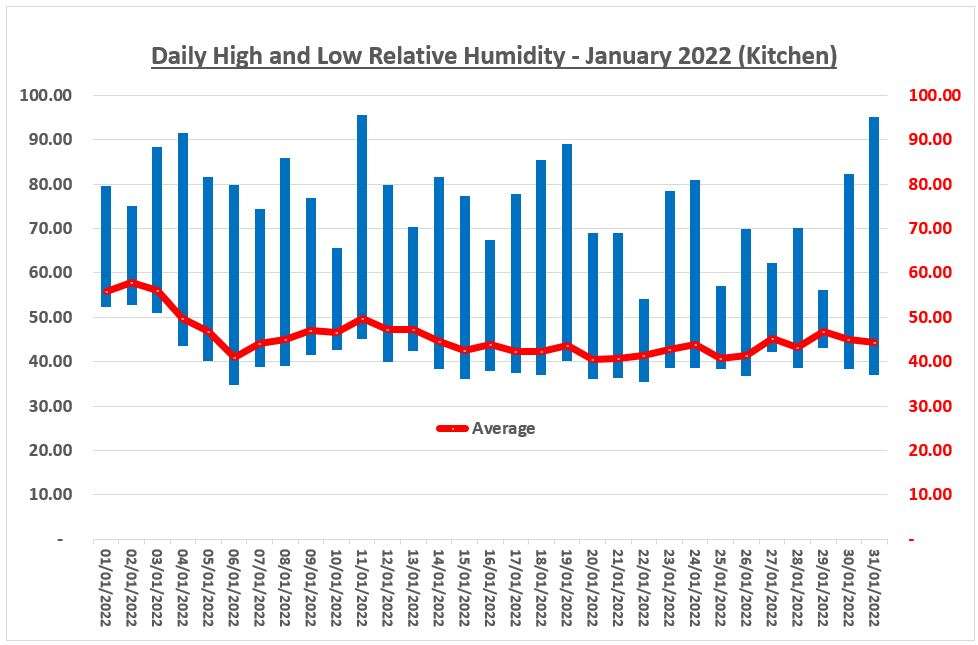
As you can see, the chart shows the range of highs and lows for relative humidity each day. The higher the relative humidity, generally the higher the risk of condensation and mould problems.
So you can see that on the 11th January, there was a peak of c.95% relative humidity and, on 6th January a low of around 35% relative humidity. Interestingly the average each day was at the lower end of those scales. Why is that?
The chart below helps to explain, using 11th Jan as an example…
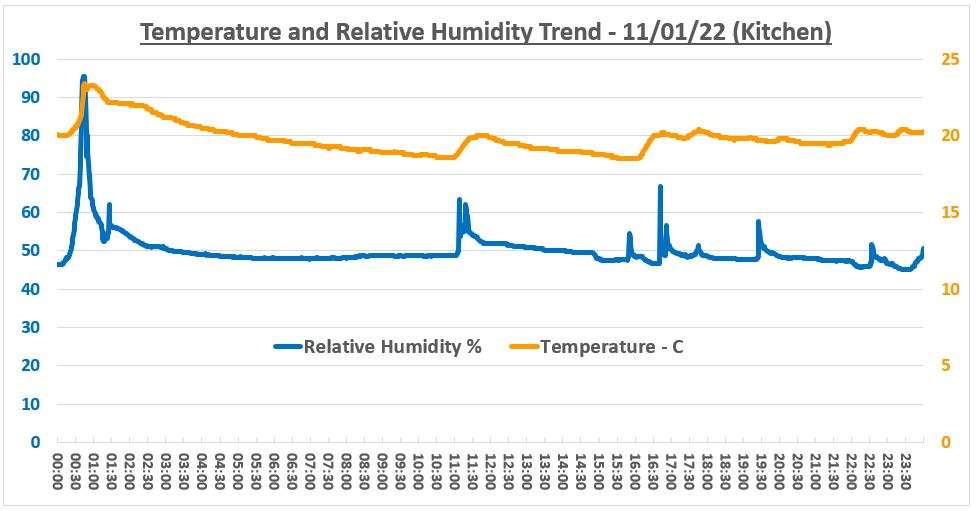
As you can see, and as we have seen in previous tests, generally the increases in kitchens tend not to last as long as we see with bath and shower condensation. They are often short ‘spikes’ and the humidity returns to lower, normal levels soon after. This is because of to things. Firstly from effective ventilation and also from the fact that, in general, cooking releases less moisture into the air than a bath for example. This explains why the average is closer to the lower ‘normal’ end of the scale.
This is a kitchen without mould problems, however, you can understand how this might be different without effective ventilation and extraction, even if only via an air brick. We look at this and many other factors when doing mould, damp or condensation surveys.
For more on fans (of a different type), see our article about if fans cool you in summer.

Do I need extractor fan in kitchen?

It is beneficial to have an extractor fan or cooker hood in a kitchen. Not only can it help remove steam, humidity and moisture from the kitchen (especially when cooking), in particular if it vents to the outside. But also it can help remove cooking odours and heat from your kitchen. Removing the steam can help strop it spreading to other parts of the house and potentially prevent condensation and mould forming, just like a bathroom extractor fan does too.
Do all kitchen extractor fans need to vent outside?

Although it is certainly beneficial for kitchen extractor fans to vent outside it is not 100% necessary. That said, it could depend on the specific situation we are talking about, including the construction / layout of the property, what other ventilation exists and the amount of moisture and steam needing venting. Benefits of external extraction include moisture and odour removal predominantly.
